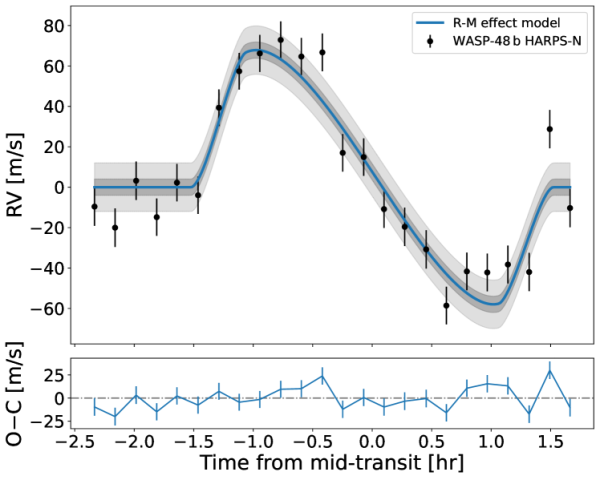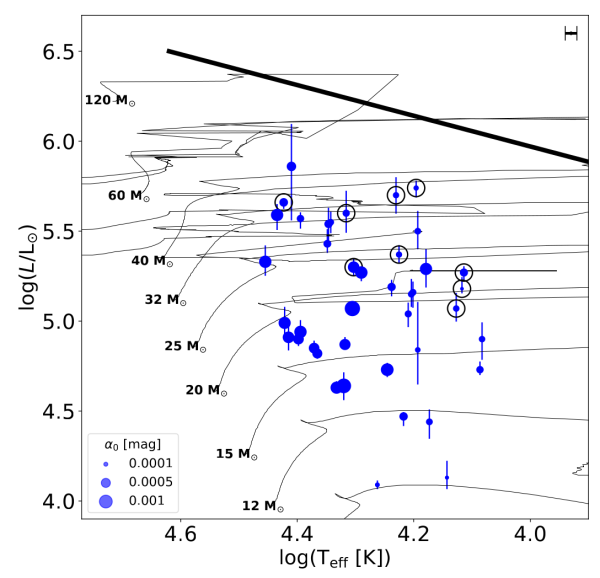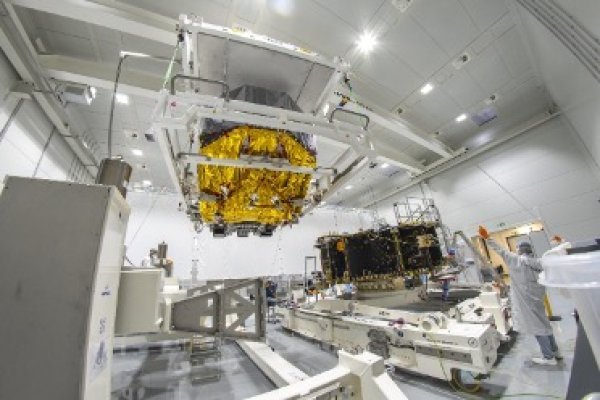One of the main questions in astronomy today is how planets get around stars into their observed orbits, which are much closer to the parent star than we observe in our Solar System. Research into the inclinations of exoplanet orbits may help to solve this mystery. Some studies show that the orbits of exoplanets can be oriented differently with respect to the rotation axes of their parent stars, which is probably related to their dynamical history. However, there are not many planets for which such information is known, and each new one is an important piece in the puzzle of the evolution of planetary systems. Jiří Žák of ASU’s Stellar Depatrtment led a study that measured the inclination of exoplanets orbits using the so-called Rossiter-McLaughlin effect. These findings help understand how planetary systems form and evolve over millions of years. They also make an important contribution to the debate on the stability and habitability of exoplanetary systems.
Abstract
The Rossiter-McLaughlin effect allows us to measure the projected stellar obliquity of exoplanets. From the spin-orbit alignment, planet formation and migration theories can be tested to improve our understanding of the currently observed exoplanetary population. Despite having the spin-orbit measurements for more than 200 planets, the stellar obliquity distribution is still not fully understood, warranting additional measurements to sample the full parameter space. We analyze archival HARPS and HARPS-N spectroscopic transit time series of eight gas giant exoplanets on short orbits and derive their projected stellar obliquity λ. We report a prograde, but misaligned orbit for HAT-P-50b (λ=41∘ +10−9), possibly hinting at previous high-eccentricity migration given the presence of a close stellar companion. We measured sky-projected obliquities that are consistent with aligned orbits for the rest of the planets: WASP-48b (λ=−4∘ ± 4), WASP-59b (λ=−1∘ +20/-21), WASP-140 Ab (λ=−1∘ ± 3), WASP-173 Ab (λ=9∘ ± 5), TOI-2046b (λ=1∘ ± 6), HAT-P-41 Ab (λ=−4∘ +5/-6), and Qatar-4b (λ=−13∘ +15/-19). We measure the true stellar obliquity ψ for four systems. We infer a prograde, but misaligned, orbit for TOI-2046b with ψ=42 +10/-−8\deg. Additionally, ψ=30∘ +18/-15 for WASP-140 Ab, ψ=21∘ +9/-10 for WASP-173 Ab, and ψ=32∘ +14/-13 for Qatar-4b. The aligned orbits are consistent with slow disk migration, ruling out violent events that would excite the orbits over the history of these systems. Finally, we provide a new age estimate for TOI-2046 of at least 700 Myr and for Qatar-4 of at least 350-500 Myr, contradicting previous results.
Image description
Rossiter-McLaughlin effect observed for the exoplanet WASP-48b by the HAPRS-N spectrograph. The observed data are shown as black dots including uncertainties. The blue line shows the best-fit model of the Rossiter-McLaughlin effect together with the error bars shown in shades of gray.
More info and contact
- Source, web ASU: Na čem pracujeme: Sklon oběžných drah plynných obrů v cizích planetárních soustavách (M. Švanda, in Czech)
- J. Žák et al., Stellar obliquities of eight close-in gas giant exoplanets, Astronomy & Astrophysics in press, preprint arXiv:2501.05615
- Contact: Mgr. Jiří Žák, dr. rer. nat., jiri.zak@asu.cas.cz



